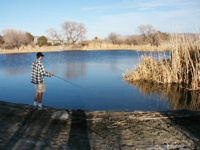
By Howard Cook
February 3, 2012 (Jacumba)--Jacumba is located in San Diego County on Old Highway 80 next to the Mexican border, Imperial County and south of Interstate 8. Native American Kumeyaay called it Ahkum, which translates to bubbling water. Indeed, Jacumba is blessed with a bubbling spring and wells producing both hot (101 degree) and cold waters. The spring was always important for plant, bird and other animal wildlife. The Kumeyaay also utilized the spring for its water and heat. They would dam the spring outflow and create ponds. Later in the 1800s, early settlers were attracted for the same reasons.
Recent comments